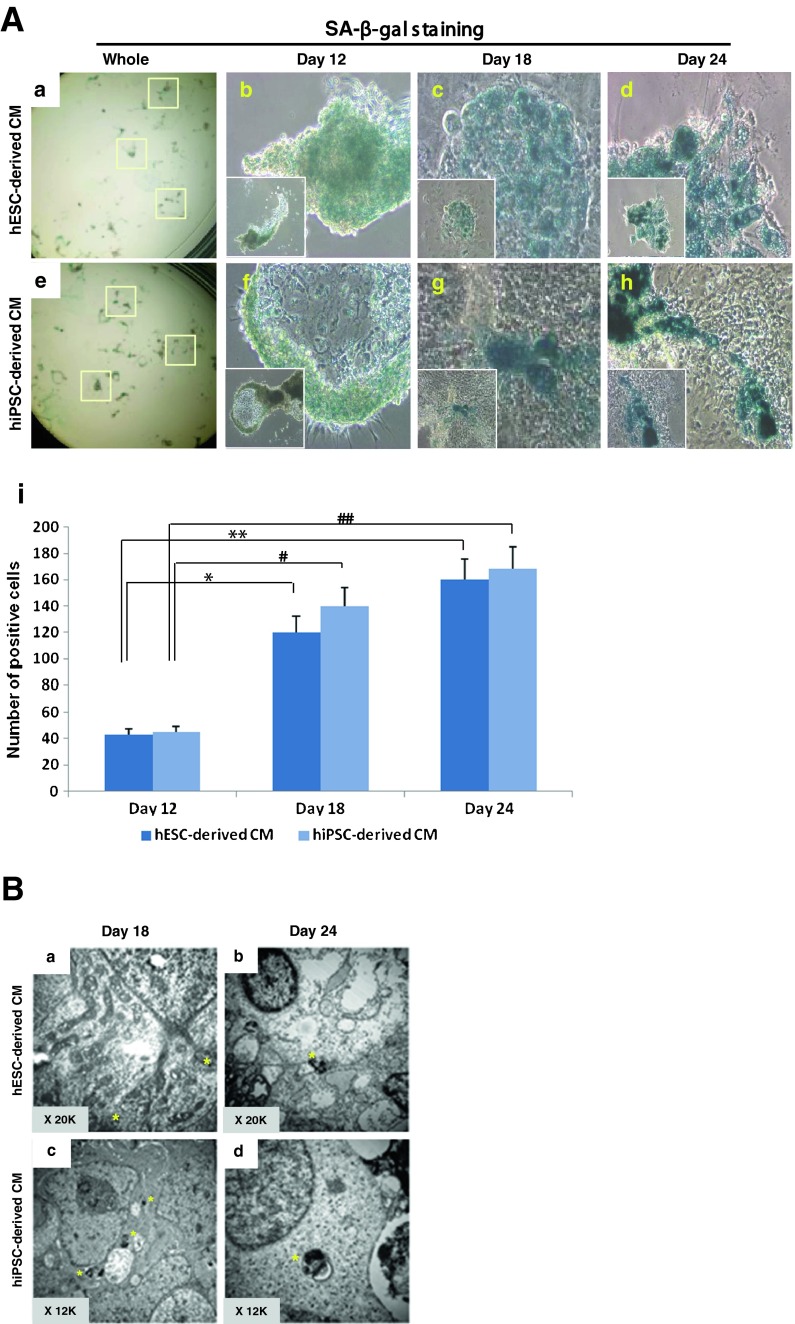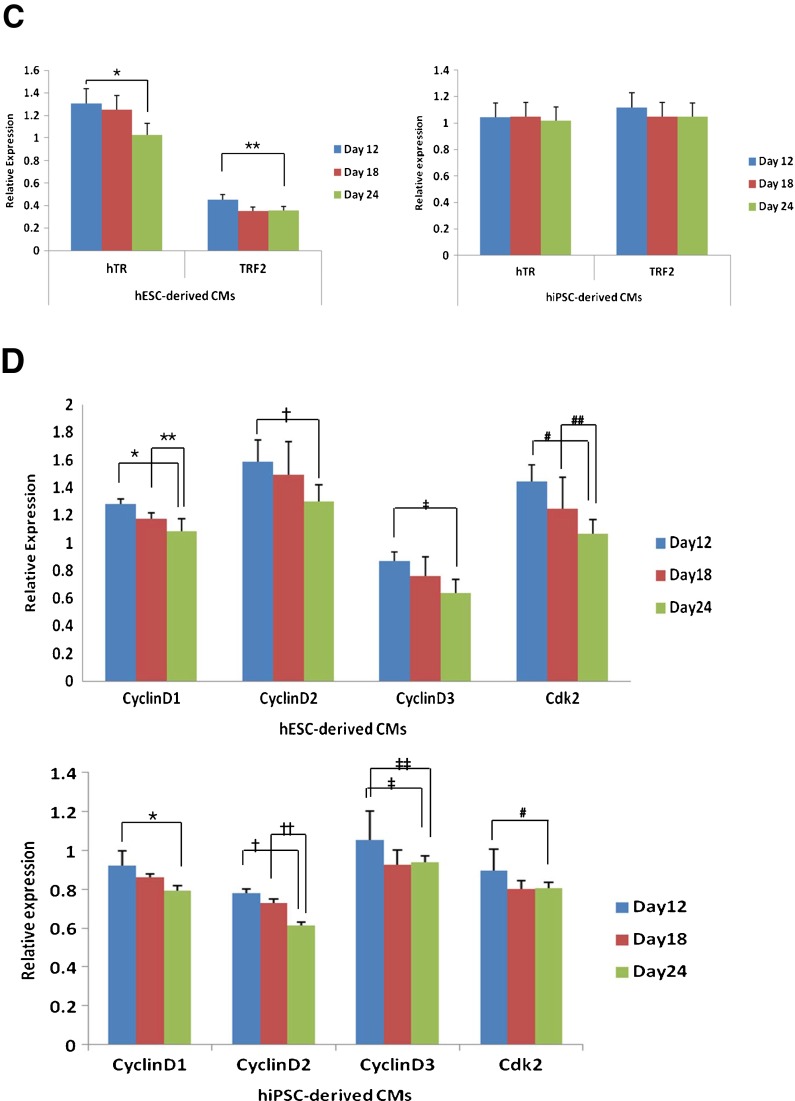Fig. 3.
Aging phenomenon in hPSC-derived CMs. Various assays were used for the evaluation of aging-related phenomena. A SA-β-gal staining was performed in each stage of hPSC-derived CMs. Beta-gal-stained cells were observed under the microscope, and small (40× magnification, inset) and enlarged images (100× magnification) are represented: a–d hESC-derived CMs; e–h hiPSC-derived CMs. a, e Beta-gal-stained CMs in a whole plate; b, f stage 1 (day 12); c, g stage 2 (day 18); d, h stage 3 (day 24); i the number of SA-β-gal-stained cells was counted under a microscope. As indicated by the drawn bars, the number of positively stained cells increased as in vitro differentiation progressed and this number increased significantly through stage 2 (day 18) and stage 3 (day 24). B Ultrastructural analysis of aged CMs using transmission electron microscopy. Observation of lipofuscin, an aging pigment, within aged cells at each stage was performed. The yellow asterisk indicates the prescence of pigment. a hESC-derived CM at day 18 (stage 2) showed faint precipitation of aging pigment; b hESC-derived CM at day 24 (stage 3) showed accumulated lipofuscin pigment spots; c hiPSC-derived CM at day 18 (stage 2) showed relatively abundant small spots of lipofuscin; d hiPSC-derived CM at day 24 (stage 3) showed larger, accumulated lipofuscin pigmentation. C Expression of aging-related genes in hPSC-derived CMs measured by qRT-PCR. The expression of hTR, a gene encoding the RNA components of telomerase, decreased in days 18 and 24 hESC-derived CMs. The expression of TRF2 also decreased in days 18 and 24 CMs. The expression pattern of hTR and TRF2 in hiPSC-derived CMs differed from hESC-derived CMs, as they did not demonstrate significantly decreased expression in stages 2 and 3. D Expression of cell cycle-related genes in hPSC-derived CMs measured by qRT-PCR. The expression of cyclin D1, cyclin D2, cyclin D3, and Cdk2 decreased with each progressing stage of differentiation. The expression of cyclin D3 and Cdk2 decreased as differentiation proceeded in both CMs


